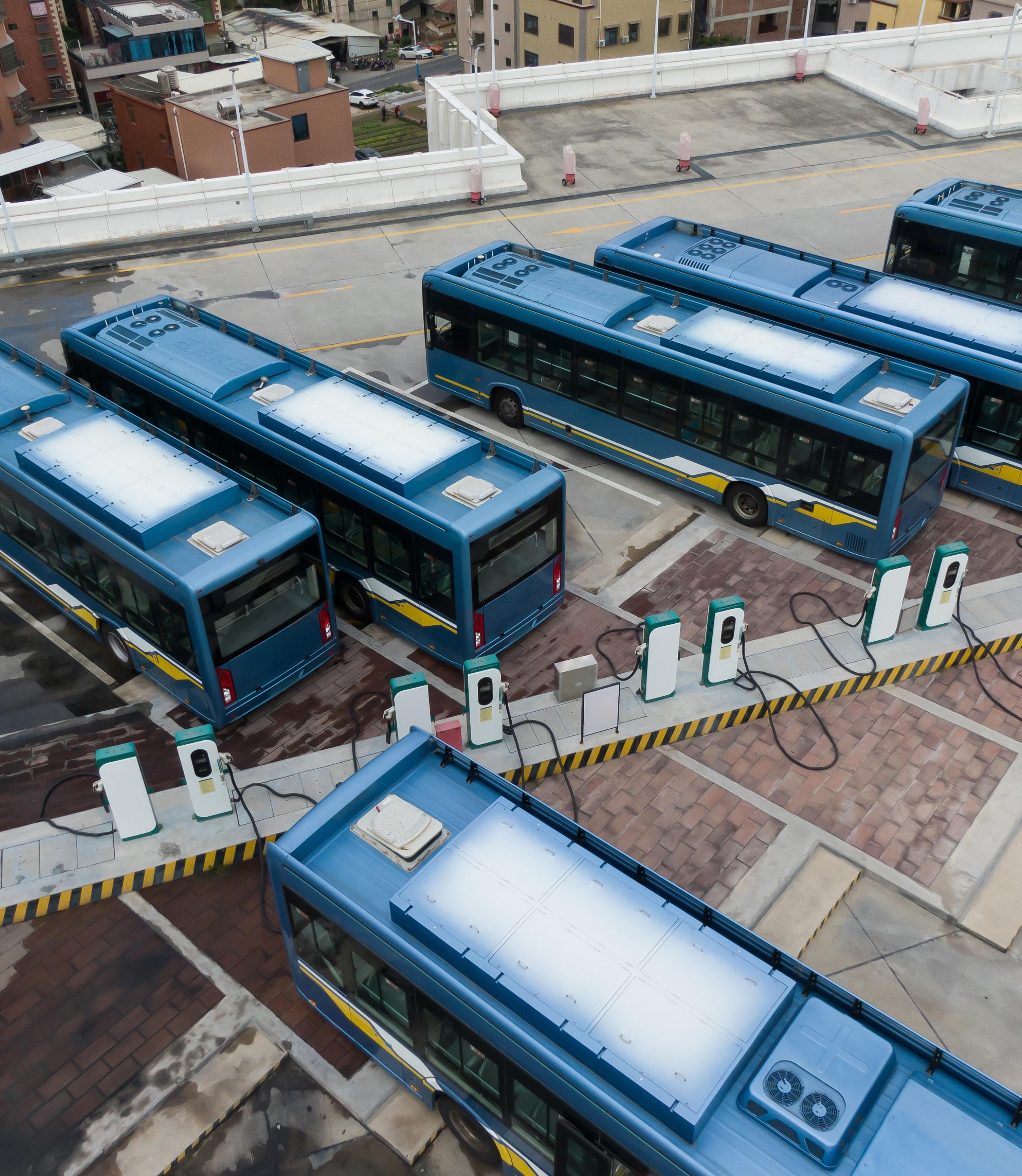
From Our Sister Sites:






diesel buses”. So far, no date has been introduced in the UK. With the recent announcement by Prime Minister Rishi Sunak, U-turning on net-zero commitments, including deferring a ban on the sale of new petrol and diesel cars from 2030 to 2035, bus operators might rethink the cost-benefit analysis of making the switch to electric if they do not feel supported by government.
Dear Readers,
For our second issue of 2023, we take a look at Busworld Europe, which is taking place in Brussels from 7–12 October. It is set to feature more than 500 exhibitors, including major players from the industry, draw a crowd of almost 40,000 and display over 300 vehicles.
Our feature article, ‘Electric Buses: Ensuring Customers Don’t Get Taken for a Ride’, looks at the challenges operators face in their transition away from diesel vehicles. There are infrastructure, staff upskilling and timetabling requirements that can also impact the passenger experience.
These challenges are significant and consequently the industry needs strong government backing. The Department for Transport’s March 2022 consultation ‘Ending UK sales of new, non-zero emission buses and calls for evidence on coaches and minibuses’, reiterated the government’s pledge from the National Bus Strategy that it was committed to “an all zero-emission bus fleet in the future” and that it would “set a legal date for the sale of new
Vehicle manufacturer Ford was outraged by the Prime Minister’s announcement, with Ford UK Chair Lisa Brankin saying that “Our business needs three things from the UK government: ambition, commitment and consistency. A relaxation of 2030 would undermine all three. […] We need the policy focus trained on bolstering the EV market […].”
It seems likely that bus operators are looking at the political climate in the UK and the responses from the car industry and asking themselves whether now is the right time to switch to electric vehicles.
Our next Bus-News magazine will be published on 6 February 2024. If you want to be featured on the BusNews website or in our e-magazine, please email Andrew Lush or call +44 7432 725001.
Please enjoy this issue of our Bus-News magazine!
Josephine Cordero Sapién, editor-in-chief


Busworld Europe 2023
A look at what to expect at this year’s Busworld Europe, which will take place in Brussels, Belgium in October.
Upcoming Events
A look at what key bus events are taking place between October 2023 and February 2024.
Directory
A directory of bus suppliers for electrification & power, digital solutions and bus design & interiors. Read about all the latest innovations and product developments in the bus sector.
Electrification & Power – p.13
Digital Solutions – p.19
Bus Design & Interiors – p.37
Transitioning to electric vehicles presents a range of challenges for bus operators, which in turn can impact passengers. Tiana May takes a look.

Busworld Europe is the world’s largest B2B exhibition focusing solely on the bus and coach industry. This 50th anniversary event was initially scheduled to take place in 2021 but was postponed due to the Covid-19 pandemic. The much-anticipated gathering is now expected to help set the stage for the future of the bus industry in post-pandemic Europe.
The event will host over 500 exhibitors across eight halls in the Brussels Exhibition Centre. This will include suppliers specialising in a range of products and services, such as:
• Vehicle manufacturing and body building

• Urban and intercity buses

• Coaches
• Minibuses
• Chassis manufacturing
• Component supplies
Where: Brussels Expo, Belgiëplein 1, 1020 Brussels, Belgium
When: 7–12 October 2023
• Accessories and spare parts
• Chassis manufacturing
• Maintenance
• Charging and refuelling equipment
• Software and IT systems
• Design and engineering
The trade show will be open every day from 10am until 7pm. It is expected to be attended by 40,000 visitors from over 140 countries who will come together to do business, network and increase their knowledge within the industry.
Visitors travelling to the event are also eligible for a free Brussels MIVB/STIB travel pass as part of their Busworld ticket to encourage the use of local public transport.

Alongside the exhibition, Busworld Europe will host several presentations and roundtables to explore relevant topics in the bus and coach industry.

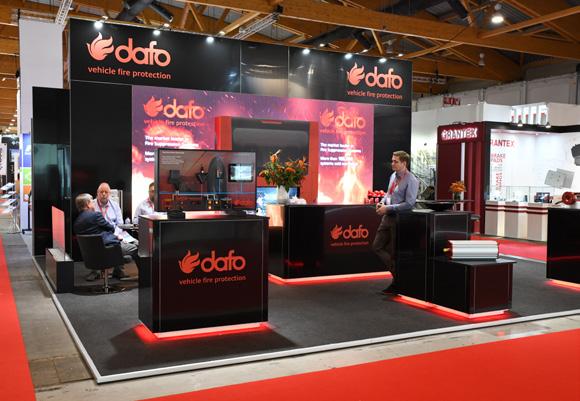


On 10 October, this will include a driver safety seminar and a driver shortage roundtable. On 11 October, a conference focused on digital mobility solutions will take place, prior to a discussion on the future of coach tourism on 12 October.
In addition, the Zero Emission Bus (ZEB) Conference will be held in conjunction with Busworld from 9–12 October.



The ZEB Conference will focus on accelerating the decarbonisation of collective road transport to help achieve local, national and international ‘net zero’ targets. The event will call on manufacturers, policy makers and operators across Europe to scale their zeroemission at tailpipe developments.
This conference is expected to feature between 50 and 60 speakers and should be attended by over 400 people.
During the first two days, the conference will focus on policies, operational experience and technical performance surrounding the deployment of zeroemission buses. The sessions will explore topics such as barriers to ZEB deployment, the status of ZEB deployment in Europe and the challenges and solutions surrounding charging and refuelling infrastructure for zero-emission buses.
The third day will focus on economics, financing and funding for zero-emission buses. The sessions will look at how operators and manufacturers can build strong business models and successfully finance their transitions away from diesel-powered vehicles.

Finally, the fourth day will consider how best to decarbonise long-distance vehicles and coaches while continuing to meet customer demands.
The ZEB Conference is being organised concurrently with Busworld Europe but requires a separate registration.



Governments, operators and local authorities worldwide are working to transition bus fleets to zeroemission technologies. In particular, electrification is currently the most popular solution for reducing tailpipe emissions and delivering cleaner and quieter rides.
However, this transition can present a range of challenges for operators wishing to make the switch. As a time-consuming and costly endeavour, a focus
on electrification can arguably take away from efforts to improve other aspects of the service including reliability, frequency and investments in desired passenger amenities such as accurate real-time travel information.
Unlike refuelling a diesel bus, battery electric buses take several hours to fully recharge. Operators

therefore have to install a significant number of chargers in the depot to serve all vehicles during their downtime period. This requires more space across land that is not always available, particularly in urban centres.
Furthermore, as each charger requires an electricity source, operators also need to upgrade their utility feeds to ensure they have the capacity to simultaneously charge multiple vehicles. Notably, in 2018, this issue resulted in The Harrogate Bus Company relying on a diesel generator to power its trial fleet of electric buses.
To avoid such ineffectual situations, operators must undertake major infrastructure projects before they can introduce electric buses and the related charging infrastructure at scale in their garages. For example, prior to opening Scandinavia’s largest electric bus depot in Aalborg, Denmark, Tide Bus contracted GodEnergi to install six transformers in the local area and lay over 20 kilometres of cabling at the facility.
Meanwhile, although some operators also recharge their vehicles en route, this approach requires additional chargers to be installed at transit centres
or at the end of the line, which may not be possible on public streets and could lead to lengthy planning application procedures. In addition, en-route chargers are also more at risk of vandalism and damage and can lead to higher maintenance costs, as workers have to travel to the chargers to rectify any problems.
When determining which infrastructure to invest in, each transit agency must therefore consider its operational needs and determine how it can overcome the associated challenges. This inhibits electric buses from being a simple and immediate replacement for ageing diesel models.

The time needed to recharge electric buses also presents problems for scheduling, especially for agencies that run buses over longer distances and prolonged periods of time, including overnight services.
Although operators can rely on en-route chargers to provide additional range during these long shifts, time must still be factored into the schedule to allow them to recharge. Currently, built-in layovers provide buses with an opportunity to make up time lost in
delays. However, if a bus is forced to wait out the entire period to recharge, it will remain behind schedule, thus negatively impacting reliability and the passenger experience.
This conundrum may require agencies to buy additional vehicles to swap in and out of the depots, which is not cost or resource-effective. Alternatively, bus frequencies may be reduced and services cut, which will have a negative impact on the utility and attractiveness of the public transport service.
In addition, maintenance issues associated with transitioning to newer technologies also pose a threat to service reliability.
Electric buses are generally thought to require less maintenance than diesel models due to consisting of fewer moving parts and components. However, as the development of electric drivetrains for commercial buses continues to progress, manufacturers are gaining experience and learning from any issues that arise. This can result in models being less reliable than expected, leading to breakdowns and cancelled services. In extreme cases over the past few years, specific models have even been recalled en masse following onboard battery fires or manufacturing faults. Most recently, on 24 August, the Milwaukee County Transit System (MCTS) removed its fleet of 11 Nova Bus LFSe+
battery electric buses from the CONNECT 1 Bus Rapid Transit (BRT) line after being informed of a potential manufacturing issue.
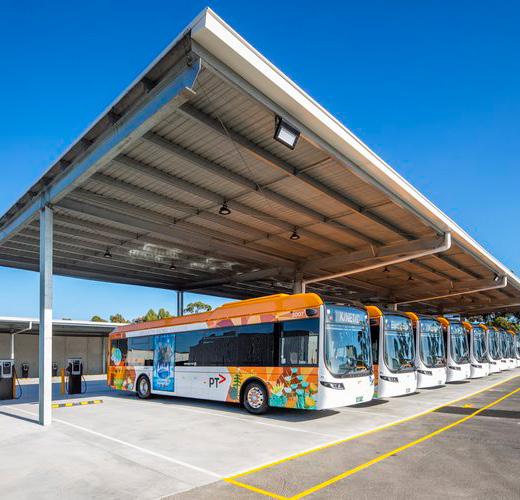
Beyond the manufacturer, to successfully manage these new technologies, bus operators must also retrain mechanics and build up a knowledge base on how best to maintain and repair their new buses. For example, last year, the state of Victoria invested almost 2 million AUD in a new pilot programme to upskill diesel bus mechanics to work on electric buses.
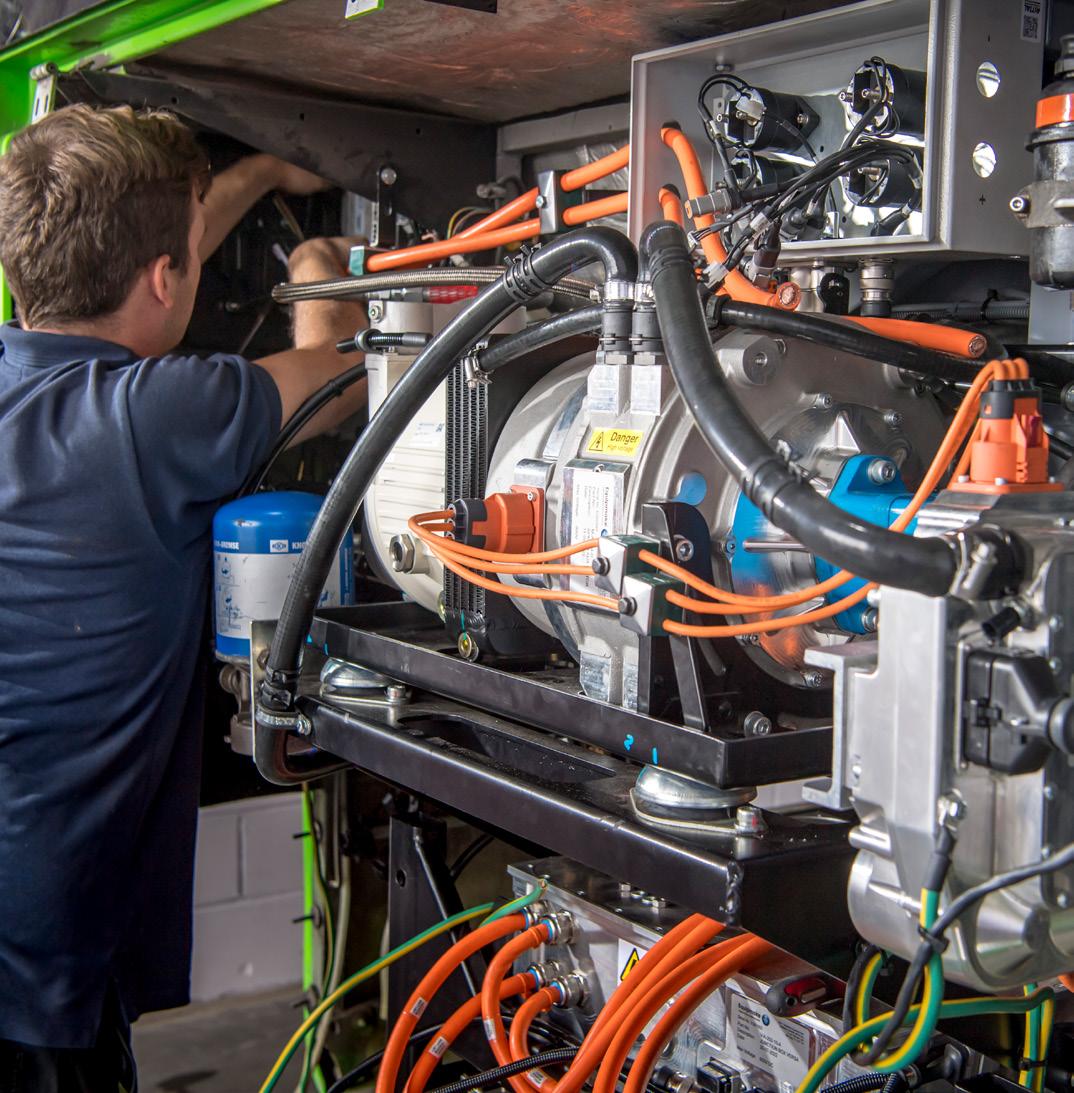
Despite the drawbacks of this initial cost, over time such programmes may help overcome some of the challenges associated with transitioning to an electric fleet. What’s more, as the technology continues to develop, newer models are expected to provide increased reliability and require less charging time to improve their capabilities.
Be this as it may, it is important to ensure that these ongoing learnings and investments do not result in a lack of progress in improving current services. Ultimately, the most effective way to tackle the climate impact of the transport sector is to encourage the shift away from private cars and on to mass transit. It is therefore vital to ensure that a focus on overcoming these electrification challenges does not take away from improving services and making them more attractive for riders.
© First Bus

Charging forward to make zero-emission transportation work


We make power last longer. Our battery technology makes cleaner power safe and scalable.



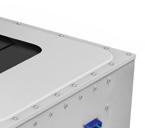

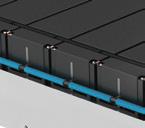









BorgWarner’s eFan system supports customers transitioning to electrified commercial vehicles, helping them comply with CO2 emissions targets.
The eFan consists of a large diameter open or ring fan, an electric motor to drive the fan, and an inverter to convert direct current from the battery to the alternating current required to power the motor. Depending on whether it’s a battery electric vehicle or a hydrogen-powered fuel cell electric vehicle, higher performance eCVs need even more cooling capacity and airflow to cater for the size of the braking resistors or fuel cell modules used.
The eFan replicates the function of the engine-driven main cooling fan in an internal combustion engine vehicle. The fan is still needed in an eCV because despite replacing the engine with an electric drivetrain, there are several other systems that require cooling, such as the high-voltage battery, inverters and traction motors and, if installed, the braking resistors.
The high-voltage eFan demands a lot of power to operate it – anywhere from 5kW for a light truck, up to 40kW for a heavy-duty vehicle – which depletes battery capacity. As this is directly related to the distance the vehicle can travel, ways have been found to minimise energy wastage and optimise fan performance and e-motor and inverter efficiencies in a limited package in the front of the truck. A large fan and electrical motor also create noise, which must be within limits defined by noise emissions legislation. This is even more important because the whole electrified propulsion system is running on very low noise levels overall.
These challenges have been met by using computational fluid dynamics and computer-aided aeroacoustics to design a fan impeller with high aerodynamic efficiency – this has less frictional drag, saving energy. More efficient airflow allowed us to
reduce the rotational speed and power consumption of the electric motor to a level at which it develops sufficient torque to drive the fan but minimises sound pressure levels.

The eFan 40, the most powerful in the range, is particularly effective in vehicles that use multiple radiators sandwiched together. This heat exchanger arrangement harnesses the dynamic pressure developed by forward motion of the vehicle, but at standstill or low speed the throttling effect of the radiators chokes the cooling airflow. Despite its compact size, the eFan 40 overcomes the high static pressure to replace or supplement the airflow, even in a tight installation space.
Safety heads the list of OEM requirements when adopting a new product in the high-voltage range. Each OEM has its own criteria regarding protection of highvoltage power electronics installations, so the inverter concept developed for the eFan needed to meet their functional safety standards in all driving situations, including a vehicle crash. We achieved this by designing an inverter that can either be integrated into the e-motor housing or mounted externally.
The eFan makes it easier to electrify heavy-duty vehicles that otherwise couldn’t be cooled costeffectively throughout a long service life – it’s helping to remove fossil fuel-burning internal combustion engines and their harmful exhaust gases from road freight transport in favour of CO2-neutral powertrains.
www.borgwarner.com

Hybrid heaters have a key role to play in the adoption of electric buses. How, you ask?
Well, their ability to switch between electric and combustion heating saves battery power, extending a vehicle’s range and making them a more viable option to operators.
As the transport sector’s focus on sustainability continues to grow, so does adoption of electric buses. They have many benefits, but as electric vehicles are still quite a new technology, they also have their limitations.
Current battery capacity means that operators are restricted in the distance a vehicle can travel between charges, and this range is shortened further when auxiliary systems also run off the battery.
“This is why fully electric heaters aren’t always the best option,” explains Søren Rasmussen, International Sales Manager at Stroco ApS; a Danish manufacturer of heaters for buses, trucks, trains and boats. “This will likely change as the technology advances and battery capacity grows,but right now manufacturers are making a big mistake by using fully electric heaters in their buses.
“Think about Nordic countries in particular – during the cold months when the heating will be relied on heavily, the distance the bus can travel on a single charge will be dramatically reduced.”
In response to this industry challenge, Stroco ApS developed the industry’s first combined fuel-burning heater/electrically charged boiler.

Hybrid heaters ensure that passengers remain comfortably warm without limiting the vehicle’s range, simply by switching between the two power options depending on the scenario.
“Electric is used whenever the battery is being charged and whenever battery capacity is above a designated percentage,” says Rasmussen. “Any other time,you can switch over to combustion mode.”
Stroco ApS’ 35.02 M – LE (low-emission) Hybrid heater is a combination heater in one complete unit that’s specifically designed for use in electric and hybrid buses.
The heater, with its stainless-steel combustion chamber and automatic fan motor regulation, is delivered in DC in combination with one or two heating elements and provides an overall energy saving of approximately 10%.

The brushless water pump is mounted directly on the boiler, meaning the installation only requires two water connections.
Like all other Stroco heaters, this model can run on
alternative fuels such as hydrotreated vegetable oil (HVO) – also known as renewable diesel, biodiesel, ethanol and RME. In the case that HVO is used, the vehicle will be running 100% fossil free.
This model is also unique in that it’s fitted with a complete electronic security system, including a ‘flame super vision’ photoelectric sensor and overtemperature safeguard, which re-establishes the contact through the application of light pressure.

“When you use HVO or biodiesel the flame goes blue and this can be an issue because if that blue flame isn’t recognised,then the combustion heater will not work. This is an issue for many heater manufacturers,but not us.We developed a special sensor for our heaters that enables us to reliably register the flame every time,” Rasmussen says.
Several Stroco customers are already seeing the benefits of the hybrid heater.
“One of our customers has thrown the electrical heater pump out of their buses in the Nordics and will only use our hybrid heaters in these vehicles,” says Rasmussen. “This is because they’ve seen how they can benefit from using a hybrid heater,such as improving their vehicles’ range and getting a better indoor climate.”
• 10% energy saving
• Reduced consumption of fossil fuels
• Electronic error indication and fan motor regulation ensures cleaner combustion
• Single unit means easy fitting
• Low-emission nozzle
Stroco ApS has been a leader in the mobile heating market for almost 50 years. It offers a wide range of heating solutions, which are known for their high efficiency and minimal maintenance.
If you’d like to learn more about Stroco’s heaters, please visit www.stroco.dk or contact:
Søren Rasmussen International Sales Managerswr@stroco.dk



In co-operation with Mastercard and K&H, the public transport operator in Budapest, BKK, has commenced a pilot scheme for an innovative contactless fare payment platform powered by Switchio.
As of 20 June 2023, passengers on the 100E airport shuttle bus are the first commuters in the country to enjoy the unmatched speed and convenience of cEMV payments in public transportation.
The trial follows a successful pilot phase and marks a major step in the ongoing digital transformation of public transit in the Hungarian capital. The data obtained in the trial will help refine the solution prior to widescale deployment.
Switchio’s innovative cEMV payment technology lets riders on the 100E airport shuttle bus use their bank card, smartphone or smart wearable to pay their fare. The system requires no prior steps, such as registration
or download of a special app. Passengers simply climb on board, place their bank card or smart device over the digital terminal, and away they go. The technology turns their bank card, virtual or physical, into their ticket.


Whereas other systems require passengers to first purchase a ticket online and then validate it in separate operations, Pay&Go does it all in one lightning-fast step. Moreover, in the event of an inspection, passengers simply present their bank card the way they would a paper ticket under the old system.
The project is part of BKK’s continued efforts to provide its passengers with an improved user experience while advancing eco-friendly public transportation with paperless digital solutions.
The digitalisation of payments in public transit is driven by technological advancements, evolving customer

preferences and a desire to make transportation more convenient, efficient and accessible.
Here are but a few of the ways digitalisation is transforming public transit:

Account-based ticketing: In account-based ticketing systems (ABT), the passenger’s bank card serves only as an identifier, while all relevant data, such as travel rights, journey records and fare policies, are managed in the back office. This gives operators an abundance of passenger monitoring data to use in improving planning and scheduling, and passengers can access an overview of their journey history, spending and receipts.

Multimodal integration: Digital payment systems increasingly facilitate multimodal transportation, allowing passengers to seamlessly switch between buses, trains, shared bikes, e-scooters and more, all within a single payment transaction.


Open-loop payments: OL payments let passengers use their credit/debit cards or mobile wallets directly without purchasing specific transit cards or tickets. These systems eliminate barriers to access and offer greater convenience for occasional riders and tourists.
Seamless integration: Integration of different payment options into a single platform means passengers can use contactless cards, mobile wallets, QR codes and other payment methods interchangeably without the need for multiple apps or accounts.
Mobility as a Service (MaaS): MaaS provides a smooth end-to-end travel experience by integrating various modes of transportation into a single platform, giving travellers a single interface in which to plan, book and pay for their entire journey.
Better data insights: Digital payments provide transportation agencies with detailed data on travel patterns, passenger behaviours and ridership trends. This data can be leveraged to optimise routes, improve services and enhance urban planning decisions.
Sustainability initiatives: As environmental concerns continue to grow, digital payment systems can play an important role in advancing eco-friendly transportation options, such as by offering incentives and/or rewards for using public transit over private vehicles.


 By Felix Thielmann, Senior Programme Manager – Business Development (DB Regio AG) at Deutsche Bahn AG
By Felix Thielmann, Senior Programme Manager – Business Development (DB Regio AG) at Deutsche Bahn AG
Over the past decade in Germany, we saw young people moving from rural areas to cities, leaving elderly residents stuck in increasingly empty small towns without health resources. But the pandemic brought about another shift: the growth of remote work and city housing costs has led to a revived interest in moving out to the countryside. Still, there’s a huge lack of infrastructure.

Since Deutsche Bahn is in the business of connecting people, it made sense for us to step in.
Deutsche Bahn is the second-largest transport-related
company, and the largest rail infrastructure owner in Europe with more than 330,000 employees around the world. Our role of connecting people meant we were one of the first to notice the extent of the demographic problem.
We figured we could accommodate aged homeowners and young families alike with a doctor’s office on wheels.
We created the DB Medibus, and launched the project with Charité, a Berlin Hospital that used the mobile clinic to provide vaccinations and treat refugees in facilities throughout the city. We enhanced the clinic by partnering with Cisco to implement the IT foundations and Webex collaboration devices needed to provide translations via teleconferencing. Finally, refugees could talk with a doctor in their native language.
We continued the project by providing recommended immunisations to school children throughout Germany. The German Ministry of Health even launched a major vaccination campaign using one of our DB Medibuses. Cisco’s partnership was incredibly vital during this stage because of the need for a constant, reliable internet connection through rural areas.
DB Medibuses were soon travelling regular routes throughout Germany. By keeping consistent staff and travel schedules, doctors serve remote communities without opening an isolated practice, and they also establish relationships and build trust with their patients. It wasn’t always easy, though. One Medibus pilot project received a lot of protests because people didn’t want a mobile doctor. But the Medibus came,
and the doctor offered consistent, personal service for weeks on end. At the end of the pilot, people protested again—this time, demanding the Medibus route become permanent. Now, it’s a regular service.
In addition to personal health benefits, there are community benefits. Rather than everyone driving cars to the nearest metropolitan area to see the doctor or shop, they have a reason to connect with each other locally while going to the Medibus. It’s revived a sense of community.

And surprisingly, it’s connected politicians. Members on both sides of the political spectrum united in support for our concept and passed a law ordering the use of mobile medical offices in rural areas under-supplied by doctors.
During the pandemic, the DB Medibuses enabled and mobilised Robert Koch Institute (RKI) researchers to conduct COVID-19 antibody studies on more than 10,000 citizens, and the Webex devices provided realtime translation services to non-German speakers.
That wasn’t to be the last emergency use of the DB Medibuses. When Russia invaded Ukraine in February 2022, many Ukrainian refugees came to Germany. Cisco
suggested the DB Medibus fleet could be of immediate use, and we launched medibushelps.org, an initiative to improve basic medical care for refugees.
With the support of Cisco’s Country Digitization Acceleration programme, we rapidly deployed four DB Medibuses to support Ukrainian refugees into German urban centres like Hamburg, Cologne and Berlin, where existing medical services were overwhelmed. Mobile medical professionals offered vaccinations and other medical care to refugees from all countries on these Medibuses until the end of January 2023. DB Medibuses drove 11,589kms to 518 refugee settlements, treating more than 12,000 patients with the programme. The translation system was again the big game-changer, operating more than 220 hours and bridging the language gap between doctors and patients from abroad. We’re working to make the service permanent in Berlin, where many refugees continue to arrive.


Medibuses are very efficient in disaster zones because the vehicles are fully self-contained. In addition to transporting medical staff and equipment, a DB Medibus has 16 solar panels to create its own electricity and operate in areas cut off from all infrastructure. We have a Starlink antenna that we can connect via satellite to bring in remote interpreters through the Cisco monitors if necessary. This all puts doctors in a situation where they can complete a live analysis and administer proper care.
Big changes must happen for us to live sustainably on Earth, and one of these will be our mobility behaviour.
Mobile infrastructure brings infrastructure closer to people, so they don’t engage in individual motorised mobility. We also must serve rural populations better with public transportation, possibly rejuvenating train tracks that have been out of service for years. All of this requires a collective effort, and the DB Medibus is just one of many ideas of mobilising infrastructure. We can mobilise dentists, pharmacies and town halls, and we are even launching our first supermarket bus.
Technology is omnipresent for this project. While the average doctor’s office in rural Germany runs on a Windows 95 PC, the DB Medibus is like landing a spaceship. It’s bright, it’s inviting and it’s full of hightech equipment. People can be greeted with a monitor using interpreters, and general practitioners can bring in specialists to offer a higher level of medical care. The bus is a bridge in itself, but the technology aboard makes the bridge possible.
Deutsche Bahn is a public transportation company, and we’re very good at what we do. But we rely on our partners to build that bridge from specialist services to our buses, and that’s where Cisco helps. The DB Medibus may seem like “just” a mobile doctor’s office, but it’s had a big impact on rural communities and become an impactful way to approach crisis intervention and address humanitarian needs.
Public transit should be dependable, consistent and accessible to all.
For authorities who manage transit networks, creating better travel experiences is a priority. However, inefficiencies in gathering and processing transit data make gaining reliable and actionable insights a challenge.
Launched by public transit tech company, Snapper Services, Mosaiq is an all-in-one data and analytics solution for the public transit industry.
This powerful platform, or Transit Intelligence Suite, combines insights from a variety of data streams to form a complete and timely picture of fleet movement. Authorities and operators can harness the power of reliable insights to drive trustworthy transit services,
restore passenger confidence and promote sustainable neighbourhoods.

What’s more, Mosaiq makes data intelligence accessible to everyone.

Mosaiq is made up of a variety of products, specifically designed to enhance network transparency, inform decision-making and improve the passenger experience.
You shouldn’t need to be an experienced analyst to make sense of mobility data. With the ability to measure network performance across a variety of metrics, such as reliability and punctuality, authorities can harness the power of Mosaiq Insights to deliver exponential value to passengers. The platform presents fleet data in an easy-to-digest format and can be

easily plugged into legacy systems to rapidly drive meaningful results.
That said, there are pockets of bus services across the UK that are not fitted with a tracking system or traditional onboard hardware, which means that the picture of bus routes and networks created by trip and fleet data is, currently, incomplete and inaccurate.
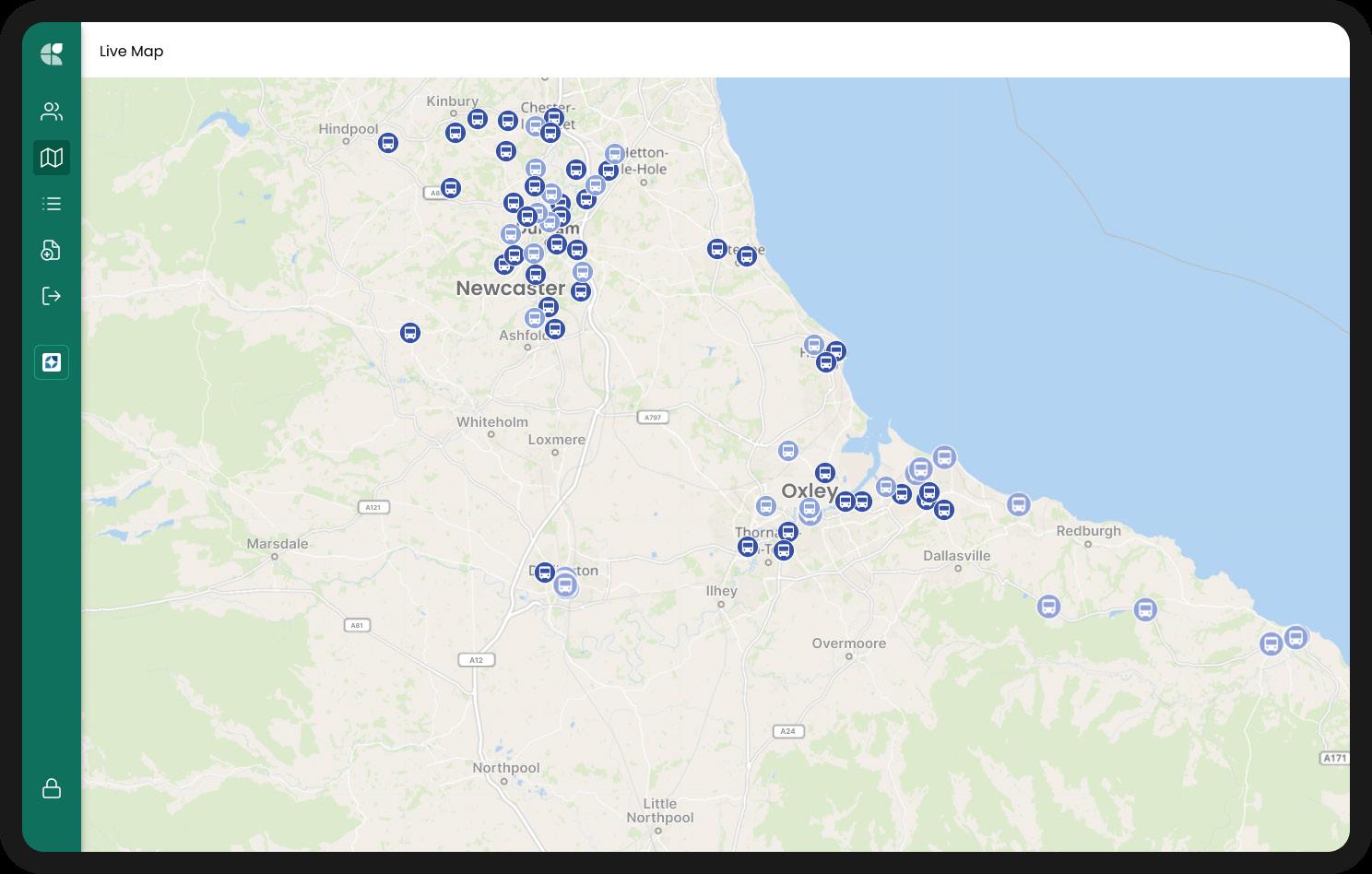
For vehicles without existing tracking capabilities, Mosaiq Go eliminates the need for costly hardware. The mobile app is designed for bus drivers and integrates with real-time data systems to give operators complete network visibility when monitoring delays and schedule changes.
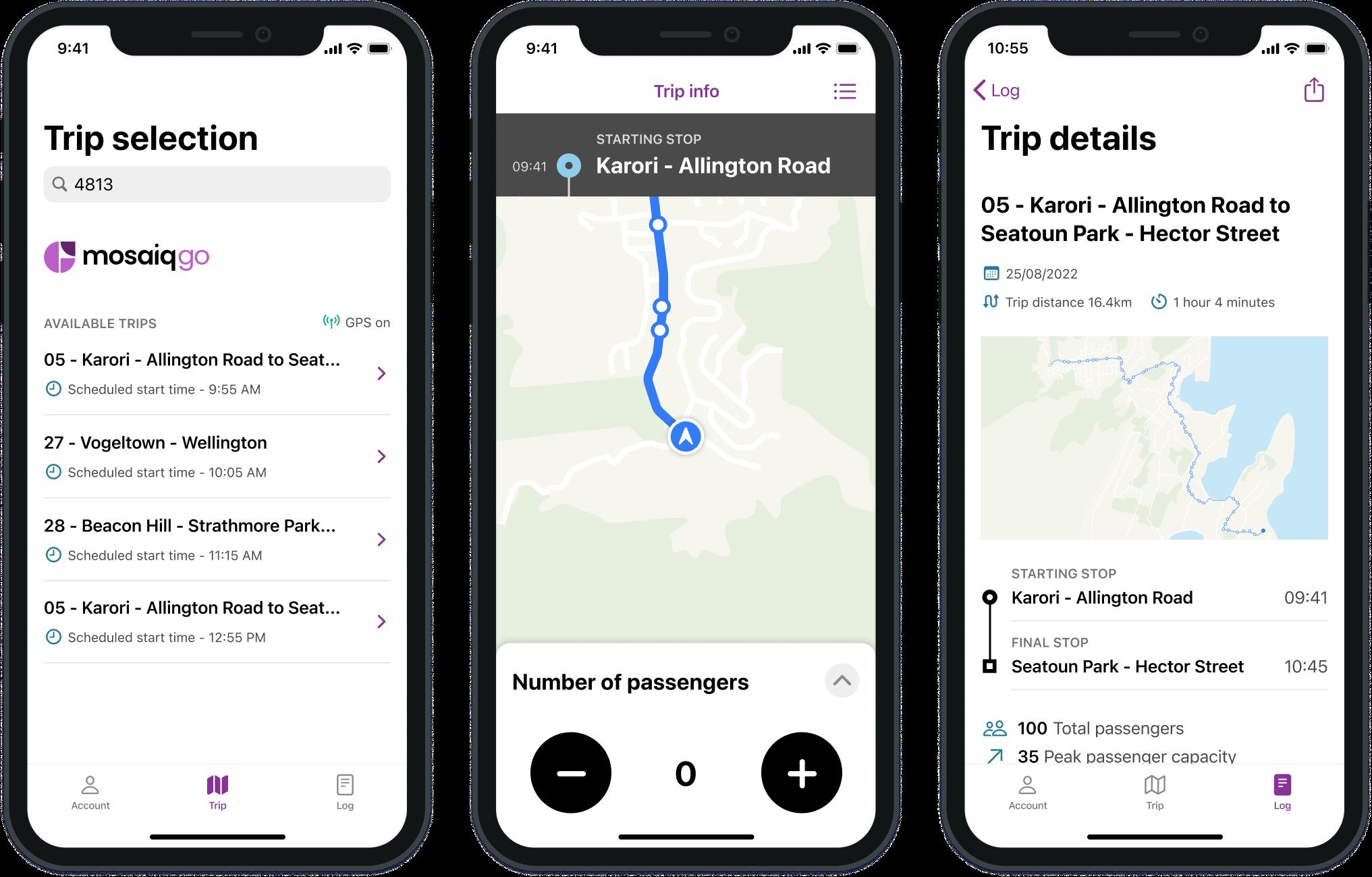
With improved transport intelligence, Mosaiq Go keeps passengers informed and enhances service predictability at a reduced cost for operators.
And it doesn’t stop there. Several UK transport authorities rely on legacy data systems, requiring access to particular measurements and reporting metrics. Through a variety of industry partnerships, Mosaiq’s capabilities are evolving to offer bespoke analytics capabilities for customers.
By enhancing network transparency through data, Snapper’s ambition of rebuilding people’s trust in transit services could be game-changing for the UK transport industry.

For more information contact Snapper Services
www.mosaiq.co
+44 7867 906374
jon.salmon@snapper.co.nz
 Mosaiq Go
Mosaiq Go
Transport operators face a unique array of challenges, including shifting governmental regulations regarding netzero targets, rising fuel costs and the complexities of the transition to electric vehicles (EVs).
However, in the rapidly evolving landscape of smart cities, transport providers have the opportunity to spearhead technological innovation and address these challenges head-on. Many have now begun to leverage artificial intelligence (AI) to digitally transform their operations and increase the reliability and efficiency of the services they offer passengers.
According to UITP, the international association of public transport, 86% of stakeholders are embracing AI and have plans to integrate it into their operations. This signals an industry-wide recognition of the potential associated with new technologies and digital transformation, which can dramatically change the way operators and passengers think about elements such as ticketing, journey planning, maintenance and scheduling.
In the realm of maintenance, AI is being used for solutions like predictive maintenance, which employs AI and ML algorithms to analyse vehicle sensor data and identify patterns indicating possible component or system failures. This provides maintenance teams with a significant advantage, enabling them to take
corrective actions before a potential issue escalates into a vehicle breakdown and, consequently, a service disruption.

By leveraging data from vehicle sensors, predictive maintenance facilitates early detection of component failures. Fleet managers can proactively address issues before they lead to breakdowns, enhancing reliability, sustainability, and cost-effectiveness.

While utilising predictive maintenance as an early warning system to minimise breakdowns is crucial for operators aiming to offer a punctual and reliable service, there are other ways in which this technology can maximise efficiency. For instance, having visibility over the precise time when a component will need replacement – rather than relying on estimates – gives maintenance managers the ability to schedule vehicle servicing during off-peak periods with the assurance that the vehicle remains safe to operate.
Furthermore, maintenance teams can reduce engineering dead kilometres by remotely conducting
the initial analysis of vehicle issues, eliminating the need to dispatch a technician on-site.
Real-world success stories of companies employing this approach include Arriva Czech Republic’s collaboration with Stratio. Over the course of a year, the transport operator managed to increase the time between failures by 13.5% and reduce the number of required vehicle recoveries by 66%.

Engineers and workshop technicians don’t only replace components and repair broken-down vehicles. Their daily tasks encompass activities like fluid level checks, odometer readings, and planning distance-based maintenance interventions.
With AI, many repetitive tasks can be automated, freeing up technicians’ time to focus on higher-priority tasks. The digitisation of these tasks also enhances the accuracy of collected data and enables real-time monitoring and sharing of information that would otherwise likely remain siloed and fragmented.

The benefits of predictive maintenance extend beyond short-term gains. Continuous AI monitoring facilitates algorithm evolution and accuracy and enables the coverage of different vehicle categories. When it comes to electric vehicles, it provides operators with a comprehensive view of electric bus conditions, enabling maintenance teams to optimise asset usage and extend their life cycle. This reduces the whole-life cost of EVs and accelerates the return on investment.
Metrics such as battery performance, range and usage optimality can be tracked to anticipate energy needs and minimise the depletion of this critical component. Predictive battery analytics can also assist operations teams in route and charging point planning.
SLAs require transport operators to maintain the number of lost kilometres – defined as the distance
that a bus fails to cover on its scheduled route due to various factors such as service disruptions, delays, breakdowns or other operational issues – below a certain percentage. This metric is a good indicator of the quality of service offered to passengers, as it reflects the unplanned disruptions that may affect regular schedules.
With this in mind, predictive maintenance and AI become even more valuable tools for transport operators to minimise unplanned downtime, anticipate and rectify faults and avoid penalties for breaching SLAs.
The incorporation of AI into public transport maintenance and operations promises heightened efficiency, reliability and sustainability. With AIpowered predictive maintenance at the helm, transport providers are empowered to pre-empt component failures, optimise resource allocation and extend the longevity of electric vehicles, all while enriching the passenger experience.
Embracing AI’s transformative potential is a collective commitment to innovation, propelling the evolution of urban mobility towards a future of reliable, sustainable and accessible transportation for all.












Introducing the Algiz 10XR rugged tablet: Your next-gen DCU for modern transit operations! Enjoy flawless route management, Automated Fare Collection, Real-Time-Passenger Information, and communications on a large, clear display.
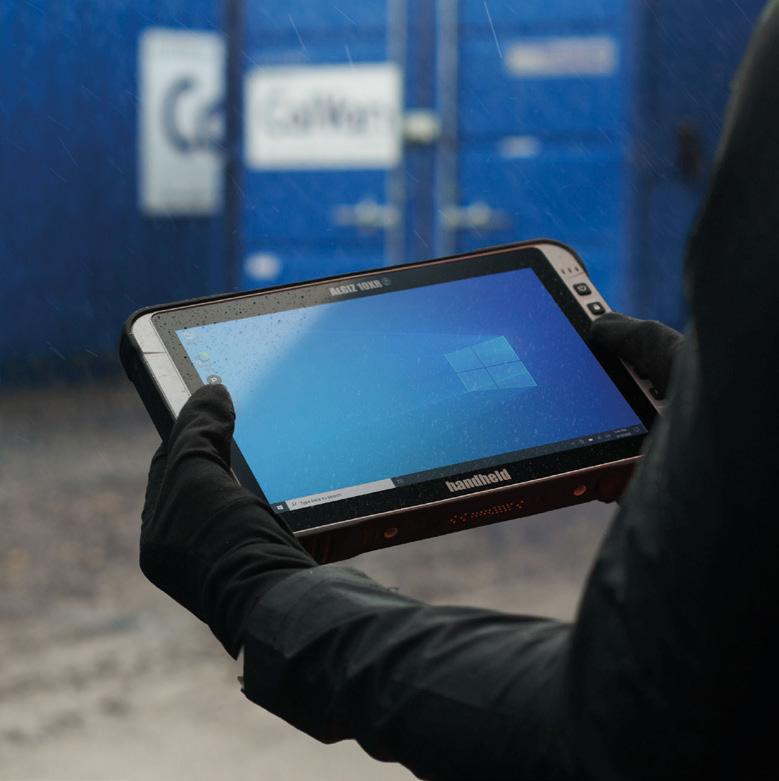
Experience real-time updates on a large, clear display, from route alterations to traffic news. With intuitive touch-screen capabilities and unmatched processing power, stay ahead and connected. Algiz 10XR: Drive Smart, Drive Rugged!
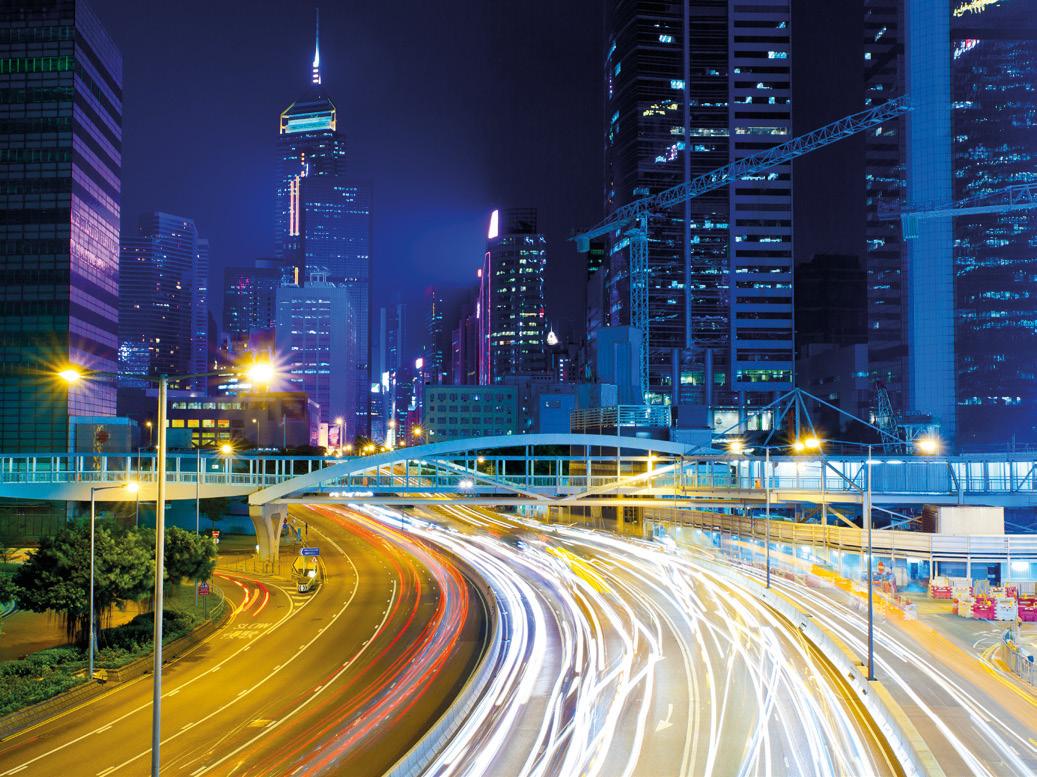

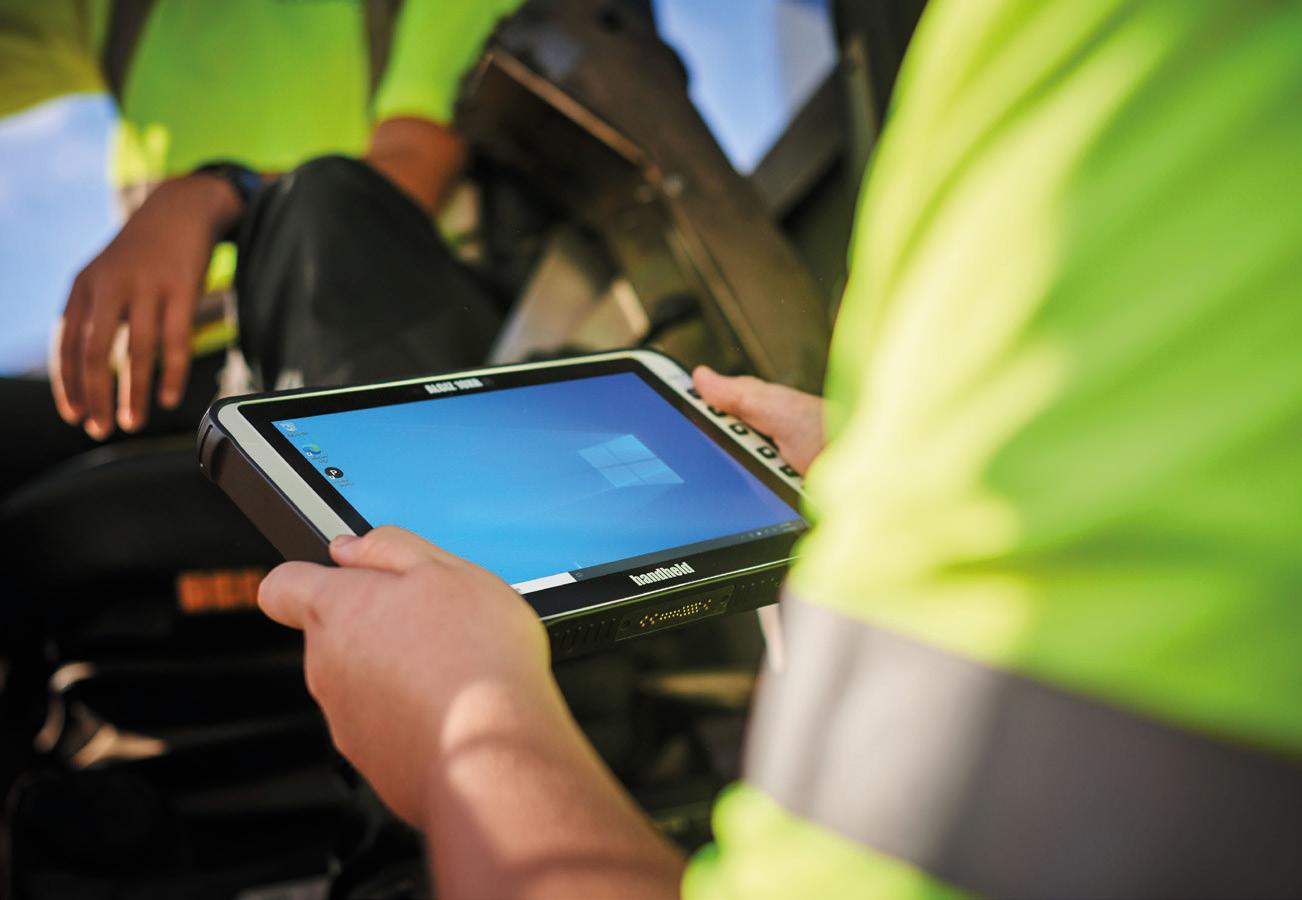
Scan this to learn more

Transportation sectors worldwide have been undergoing a rapid evolution, particularly in the realm of technology.
A standout innovation in this domain is the adoption of fully rugged tablets for onboard bus systems. These robust devices are not only reshaping the user experience for passengers but are also bringing unprecedented efficiencies for operators.



Handheld’s ultra-rugged tablets are used onboard buses as driver control units (DCU). A DCU is a critical element of modern transit operations, assisting drivers with automatic fare collection, route management, vehicle diagnostics and communications.
When a rugged tablet is used as a DCU, it simplifies these tasks with integrated features like GPS, robust processing power and a large, clear display. Plus, given their compact size, rugged tablets allow for more efficient space utilisation inside the driver’s cabin compared to traditional DCUs.
The tablet’s touchscreen interface allows drivers to easily access real-time data, from route changes to traffic updates. With built-in connectivity options, the tablet enables seamless communication between drivers and control centres, ensuring that drivers always have the latest information at their fingertips.
Handheld offers both Android and Windows rugged tablets with unmatched value as a driver control unit or for mobile mapping. Algiz rugged tablets are compact in size and combine powerful computing with
ultimate reliability in the toughest environments. Fast processing power along with user-friendly features and design provides efficiency on long workdays for bus drivers.
Handheld’s new Algiz 10XR rugged Windows tablet harnesses the power of today’s technology to deliver significant improvements for rugged mobile computing. It is a smaller, lighter, 10-inch Windows tablet that achieves more even while taking up less space. The Algiz 10XR’s Intel Elkhart Lake platform really packs a punch.
First, let Handheld’s Lina Simme give you an overview of her top five features of the Algiz 10XR rugged Windows tablet. Check it out here.

The Algiz 10XR includes an amazingly bright screen that features glove/rain mode so it’s ready to go when the weather gets harsh. There are three separate USB-C ports and optional integrated NFC. It comes with a dedicated u-blox receiver and chipset as well as long-lasting, hot-swappable batteries. Future-proof 5G communication can handle live video streams and bandwidth-heavy tasks like mapping.
Public transport or waste management, GIS or mining; ambulances or logistics and yard work; a hundred
different mobile or vehicle-mounted applications – the Algiz 10XR rugged Windows tablet was designed for modularisation and customisation. The u-blox functionality offers untethered dead reckoning (UDR) by blending GNSS signals and inertial sensors to provide accurate positioning performance under even weak GNSS conditions.
Wait – there’s also a broad ecosystem of accessories like a vehicle dock with antenna pass-through for both GPS and Wi-Fi – providing optimal signal quality at all times – carry cases, hot-swappable batteries and more. Plus, the Algiz 10XR has a unique ‘backpack’ configuration to allow for customised, proprietary add-ons.
With a focus on durability, performance and ergonomic design, Handheld’s mobile computers all come with an IP65 or IP67-rating meaning that they are waterproof and fully protected against dust.
Meeting stringent MIL-STD-810 test standards for withstanding vibration, drops and tumbles, as well as extreme and fluctuating temperatures, dust and water, these rugged devices can handle the daily pressures of any road condition, making them ideal for deployment in any vehicle.
With their rugged design, powerful performance, and flexible connectivity options, Handheld’s product line of rugged tablets and handhelds offers exceptional performance reliability, at an affordable price, making them a top choice for those in need of stable mobile computing solutions – and the Algiz 10XR Windows tablet is no exception.
For more information please contact Dave Cawsey, Country Manager Handheld UK and Ireland
+44 1926 333 266

d.cawsey@handhelduk.com
www.handheldgroup.com
PC-based in-vehicle NVRs for real-time surveillance
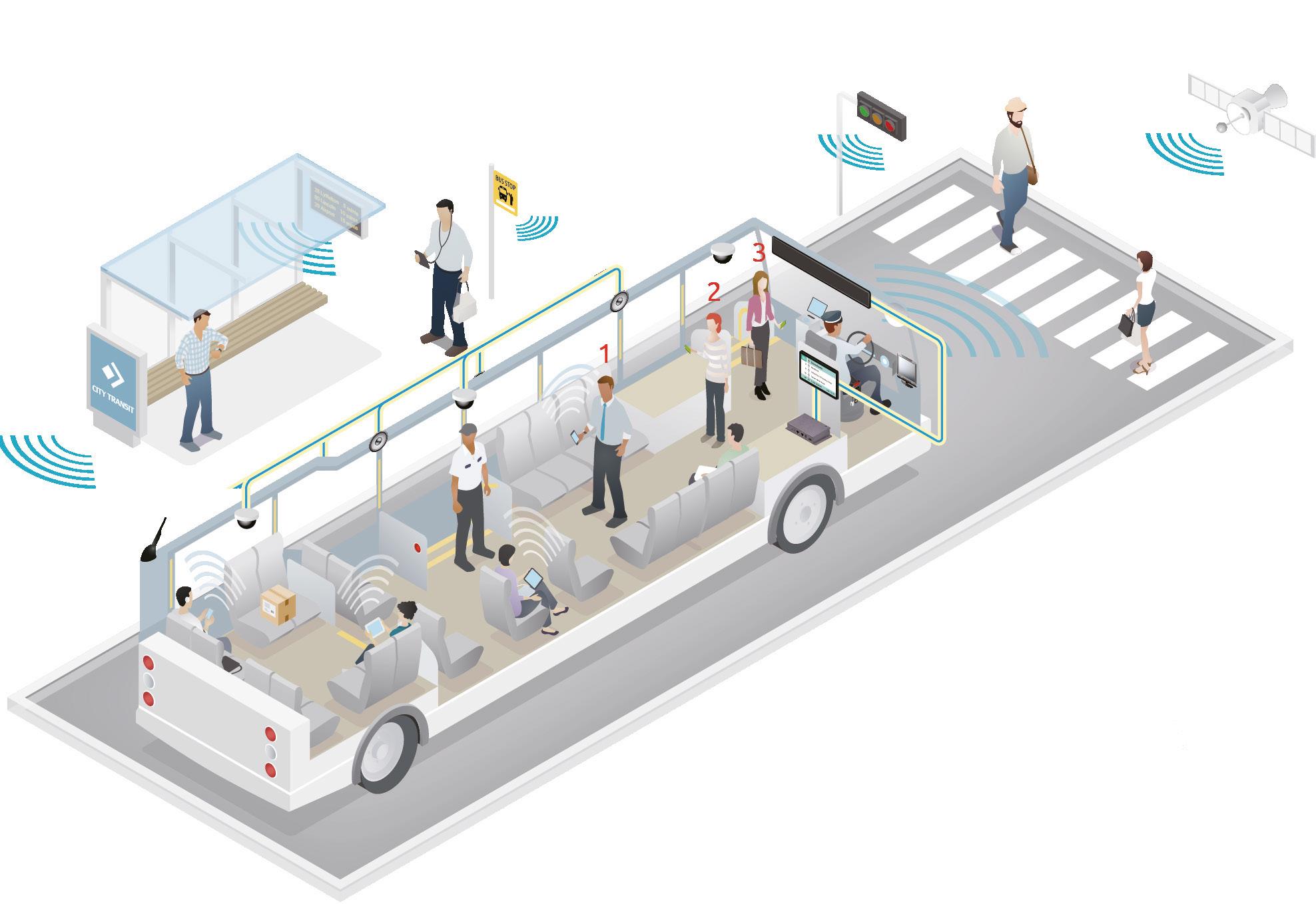
Built-in GNSS with dead reckoning function for accurate positioning
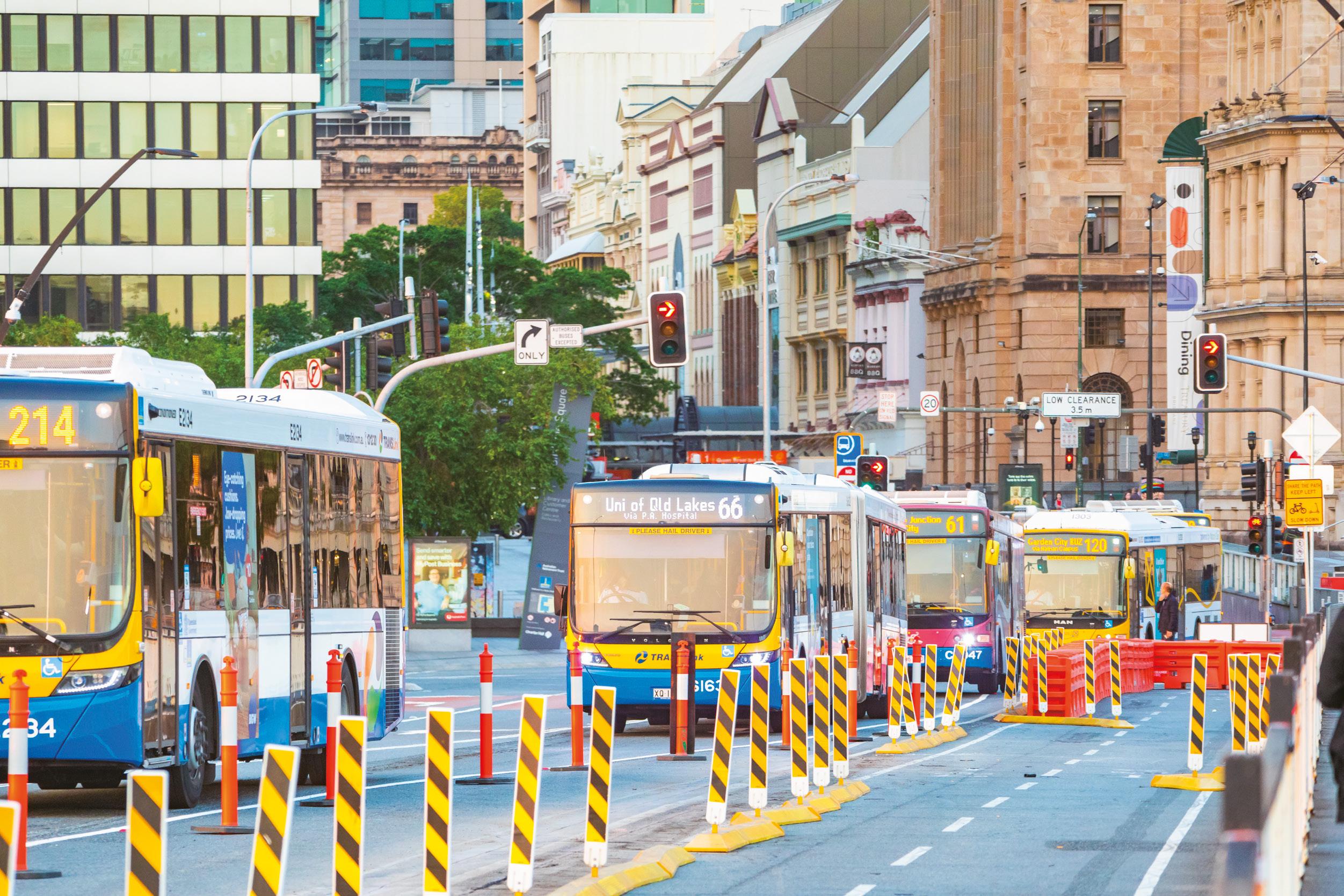
Built-in communication port for signage, card readers, and safety sensors
Support multiple Wi-Fi and cellular modules for uninterrupted internet connection
In-vehicle HDMI extender over IP for PIS and infotainment
VTC7270-C8
Powered by 12/13th Gen Intel® Core™ i
■ Rich I/Os, and up to 4 WWAN/WLAN for mobile applications
■ Up to two AI accelerator as optional
VTC 7260-xC4
Powered by 11th Gen Intel® Core™ i
■ Rich I/Os, and up to 3 WWAN/WLAN for mobile applications
■ Triple display, VGA, HDMI and DP for multi video-out


Revolutionising Urban Mobility: NEXCOM’s AI-Powered In-Vehicle Computers, VTC 7270-C8, Propel Bus Services into a Safer, Efficient and Enhanced Driving Experience

Thecontinuous exponential growth in the global population has created challenges for the traditional transportation system as it struggles to improve traffic congestion, public safety and reduce pollution.
With a growing emphasis on enhancing safety, efficiency and driving experience, one significant development in public transportation has been the integration of AI-powered in-vehicle computers within buses. This technological evolution has emerged in response to a confluence of factors that have reshaped the landscape of public transportation.

Safety is paramount in the realm of public transportation. Buses, being large and often operating
in congested urban environments, require advanced systems to mitigate accidents and safeguard passengers, pedestrians and other road users. Traditional onboard systems lacked the capability to respond dynamically to real-time traffic conditions, potential hazards and unforeseen obstacles.
To ensure public safety, multiple cameras are used to record and analyse images. NEXCOM VTC 7270-C8 supports up to 8 IP cameras by PoE ports. This NVR utilises an NVMe SSD as its internal storage while all passengers and driver states are continuously tracked through 5G upload. It supports GNSS and dead reckoning in addition to Dual LTE/5G and Dual Wi-Fi. Equipped with the latest 12/13th generation Intel® Core™ i processor, VTC 7270-C8 offers 30% more computing power than its predecessor. With Intel® OpenVINO and Intel® Deep Learning Boost, it accelerates high-performance image recognition and

AI/deep learning inference workloads. This facilitates ADAS in identifying, recognising and predicting vehicles’ internal or external abnormalities via video surveillance.
AI-powered in-vehicle computers bring an unparalleled level of intelligence to buses, enabling them to analyse complex data from sensors, cameras and other sources to make split-second decisions that optimise safety. These computers can detect pedestrians, cyclists and other vehicles, predict potential collisions, and even engage in autonomous emergency braking when necessary.

With the rise of urbanisation, cities are grappling with increased traffic congestion and pollution. VTC 7270-C8 address these challenges by optimising route planning and driving behaviour. The buses can utilise AVL via GNSS, 5G, to provide smart public transit and intelligent traffic system (ITS) to compute the fastest route. Supporting CAN bus, AI-powered in-vehicle computers can also retrieve ECU information, vehicles speed, fuel volume, etc., to improve better eco-driving. By optimising driving patterns and routes, these systems can minimise fuel consumption and emissions. Furthermore, their ability to monitor vehicle health in real time ensures that maintenance is conducted proactively, reducing the chances of breakdowns that can lead to unnecessary emissions.
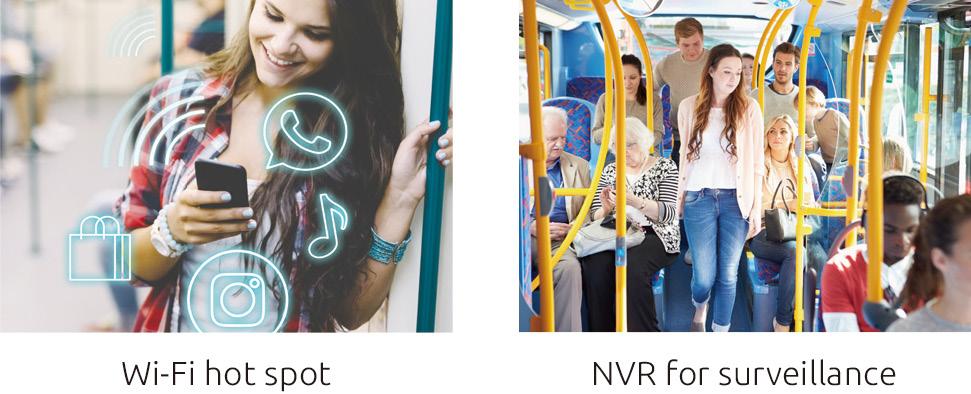
Modern passengers demand a seamless and convenient travel experience.
To facilitate both cash and cashless transactions, NEXCOM VTC 7270-C8 supports bus ticketing payment systems and cash receipt printers by RS-485 interface. It also utilises 5G technology to transmit GNSS signals efficiently to the fleet management centre. The fleet management centre uploads data to the server, generating AVL and real-time bus schedules for passengers, and combining digital signage ads at the bus stop.
Compliant with MIL-STD-801H, the compact and fanless NEXCOM VTC 7270-C8 has a wide operating temperature range and is secured by TPM2.0. Provided with rich I/Os, expansion slots and LTE/5G, it can be fitted in various ITS applications; an alternative version, the NEXCOM VTC 7260-xC4 featuring an 11th gen. Intel® Core™ CPU, is also available. Experience the benefits of powerful computing and efficient management with this upgraded telematics computer, ultimately helping vehicles drive towards a smart city.

NEXCOM’s Mobile Computing Solutions (MCS) has extended and developed many products for use in AI, 5G and safety-related applications. We’re creating a safer working environment and saving operational costs through improvements in logistics for more efficient fleet management. We support our business partners to further promote edge AI computing for ADAS, AMR and autonomous driving.
Click here to watch our video.


Located in Emilia-Romagna, in the heart of Italy’s Motor Valley, PEI Mobilty was born in a context of excellence and over the years has developed a wide range of products for interconnection, becoming a key partner for leading manufacturers of articulated buses.
Years of activity and success in the sector have led PEI Mobility to have sold 10,000 bellows in Europe and worldwide to date, resulting in being a reference partner in a high-level position on the international scene.
Made with high-tech materials, our bellows feature patented systems that ensure powerful fastening to the carriage body to guarantee ultra-smooth movement, greater reliability and increased on-board comfort. Flexibility and efficiency are constantly supported by extensive engineering expertise, IATF automotive certification, stringent tests and calculation procedures, together with continuous research and development activities.
PEI Mobility bellows are made of UV-resistant copolymer complying with the highest safety regulations in the automotive field. A wide range of colours, in addition to the traditional grey, allows extensive customisation. The translucent fabric option makes the vehicle’s interior more luminous, greatly improving passenger comfort.
Over the years, PEI Mobility has developed and produced several innovative systems, many of which have been patented:

• The connecting clips between bellows: the system allows quick and easy installation, in addition to being a reliable and custom-tailored product

• The fastening of internal bellows to the body and central hoop: this system allows fast replacement and gives great stability to the structure
• The innovative external bellows fixing system to the vehicle body: it allows quick installation, which is unique on the market: bellows become extremely easy to inspect and maintain
• The special zips reduce the tension of the bottom-
part fabrics and ensure a more effective sealed area
• The clip system for the bottom is easy to install and is reliable
The articulation joints by PEI Mobility are designed to guarantee safe operation on the road, optimising the vehicle’s dynamic performance under all operating conditions and are suitable for all kinds of buses. Specific control systems ensure vehicle stability when driving, guaranteeing passenger safety. The moving parts are designed to improve on-board comfort and smooth driving.
Digital mechanical simulations, dynamic analyses and durability tests on the road are intended for stressing the articulation joints to the limit, in order to guarantee the absolute reliability of the vehicles on which they are fitted.

The dynamic simulation in vehicle design performs an important virtual analysis and testing tool that has been supporting physical tests made in automotive industry for a long time now.
In particular, the sector of urban bus design is a theme of great interest for research in the automotive world, both in terms of features’ performance and considering safety and comfortable mobility for passengers.
In this specific context, the R&D department of PEI Mobility has been working for a long time now with special state-of-the-art multi-body software, to create solutions whose primary aim is to optimise road transport. Through these cutting-edge technologies and thanks to an experienced and qualified team of engineers, PEI Mobility anticipates the market needs by developing high-tech products in terms of performance and safety. Therefore, dynamic simulation allows PEI Mobility to examine the performance of the hydraulic damping system by actually predictively testing each bus on which it will be installed, with the imperative to meet the safety parameters established by the most authoritative safety certification bodies.
PEI Mobility thus commits to solving one of the main issues related to the design of buses, the event known as ‘jack knife’, typical for articulated vehicles.
In this field, this term represents a dangerous operating condition that leads to loss of trailer control and compromises maintaining the vehicle trajectory.
The constant research and development activity of the PEI Mobility engineering team aims towards increasingly sustainable urban mobility, with solutions designed to guarantee maximum passenger comfort and safety, as well as resistance and ease of maintenance of bus components.
PEI Mobility will present important new products at Busworld in Brussels from 7 to 12 October, join us at Hall 6 Stand 676!
www.peimobility.com





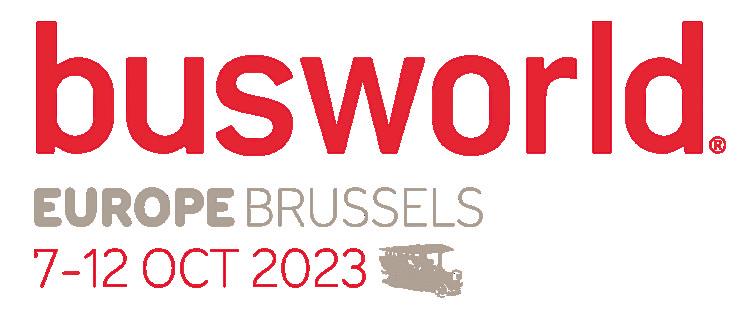

Industries was founded in Correggio in 1992. Correggio is a small archetypal Italian town located between Milan and Bologna.

Correggio is a typical example of an Italian industrial district where there is a widespread know-how related to a specific sector and / or production process: in this case, everything revolves around plastic and this is the best base from which to launch new entrepreneurial challenges in every kind of business based on plastic as raw material.
In this Italian region, Emilia Romagna, we can find other examples: textiles in Carpi, a few kilometres from
Correggio; moving 30km south we find Sassuolo, which is considered the capital of tiles. Bologna is not far away with its packaging equipment district and others can also be mentioned: Parma for food equipment and so on.
Of course, what is true throughout Emilia Romagna is the presence of the high-end automotive industry and this is also the reason why it is also called the ‘Italian Motor Valley’. Ferrari, Lamborghini, Maserati, Dallara, Ducati, Landini and others minor brands have linked their identity to this land.
Coming back to the small town of Correggio where everything started in the sixties, dozens of companies have been founded to produce plastic parts and, over
the years, most of them have tried to create their own product range in different fields: some have been successful and also started to out source part of the production to those ones not having found their specialisation.
Prima Industries was founded by the Alberti brothers with a clear view to produce automotive accessories. However, this was the result of a process which indeed started many years before when the father of Silvio and Sergio, Alberto Alberti, was one of the co-founders of SPAL S.r.l. and other enterprises in the Correggio area such as Marbet. Consequently, the Alberti family has always had in their DNA.
For over 30 years, the Prima Industries brand has been synonymous with mechanical plastic accessories of excellence for the automotive world where we supply the world’s leading bus manufacturers with solutions suitable for exterior and interior vehicle completion. Prima Industries operates according to the latest principles of ‘design to cost’ thanks to the internal management of all production process phases, from design to the industrialisation and production of its
accessories, relying on its cutting-edge plastic moulding department.
Prima Industries can support automotive manufacturers in different ways: on the one hand, customers can draw on the vast catalogue of existing solutions to lower their costs and development times and, on the other hand, the company is always ready to take on innovative design and construction challenges for customised products. Prima Industries believes in the certification of its processes. The company operates in compliance with: ISO9001, ISO14001 and ISO45001.
The bus sector is a competitive environment and so diversified that it requires extreme production flexibility, customisation skills and efficiency, even though quality is the main indicator of competitive strength in the automotive environment in general and in this niche too.

The case of Prima Industries is an emblematic success case because over time it has progressively increased its range of exterior and interior bus accessories, managing to reconcile the needs of the large global manufacturers with the needs of small local fitters.
The presence of Prima Industries within the HVAC and cabins sector is the natural extension of the company’s historical presence in the bus sector. In fact, Prima’s extensive accessory ranges have encouraged many cabin manufacturers to make full use of them, thus managing to exploit the wide range of existing solutions, minimising investments and time to market for highly customised products and low production volumes.
Today, Prima product range includes city bus accessories (pushbuttons, catching handles, emergency hammers, handrails, supports) as well as service sets, air and light diffusers and external handles. Prima Industries has grown successfully within the automotive world to the point of also becoming a technical reference for other sectors, such as camper vans and the off-road and rail sectors, which have drawn on solutions that arose out of different contexts, but which are very flexible for their respective fields of application.
In terms of distribution structure, Prima Industries, being a part of a very complicated supply chain, has to understand how to meet the client requirements
correctly since it can be required to deliver worldwide to a multinational group that has production plants all around the world or to integrate its product flow with other final client tier-one suppliers.
In this business, size definitely matters because in some cases clients prefer to consolidate parameters in order to amortize the transport costs and to decrease the internal stock: in this case, the right partner is a specialised distributor offering different types of internal or body accessories.

So, for Prima Industries it’s crucial to understand the client supply chain structure in order to optimise its added value in supplying the right product in the right way, keeping quality as the main operational reference.

Price must also match the requirements but understanding how to meet the client supply chain requirements must come first, as must understanding of the technological operating requirements.
Busworld 2023 will be a real turning point where Prima Industries will explain to existing and potential clients the direction we are looking to take and the path we have in mind to reach our targets. In our near future we see a full focus on automotive activities and we have been on our way to implementing this goal since February 2023, when we spun off every activity different from our core business activities.
The second pillar of our strategy, which is also underway, is investing in updating and expanding the existing product range following two very simple
and clear principles: we design and sell what we can produce internally and what is related to our know-how which is ‘plastic-mechanical know-how’.
The second principle consists of listening more carefully to our clients and the market needs and, when it’s possible, to look positively to developing partnerships where Prima Industries commits to converting a need into a finished product while clients share their user background to help us to meet the market requirements perfectly.
We have many new developments on the way and others already materialised as result of the new approach I explained above.
Over the last three years we have been experiencing a growing trend and this is extremely important: we need to consolidate this trend because, especially in the automotive sector, it’s important to reach a certain critical mass which will allow us to sustain the needed investment in products and organisation.
In any case, it’s clear we have to continue to look internally, to secure the growth path we are creating for Prima Industries, and, at the same time, we must never stop looking at the market to capture future challenges and opportunities. What we see now is sustainability as a global challenge and we hope to meet it!
Whenusing public transport, it is important for people with reduced mobility to be able to locate and operate products quickly.


Travel by bus should be easy, safe and comfortable for every passenger. A door-opening push button must function just as reliably in extreme heat with dust as in high humidity or icy temperatures. In addition to functional reliability, TSL-ESCHA and MAFELEC place a great deal of importance on passenger comfort.
Passengers with reduced mobility should be able to recognise and operate the products easily. The push buttons, signal devices and LED lighting comply with the recommendations of the associations and meet the legal requirements.
To ensure that boarding and alighting can proceed smoothly during passenger changes, operating elements such as door opening push buttons need to be recognisable at glance. The aim is to ensure that passengers, in particular those with visual impairments, have access to public transport that is as barrier-free as possible.
The coloured pictograms on the TSL-ESCHA push buttons are mounted behind a transparent cover that is resistant to UV light. As a result, the colours remain unchanged and the pictograms are protected from wear and dirt. In addition, TSL-ESCHA uses a coating process to apply the colours to the covers, providing long-term protection. Plastic components made of coloured plastics cannot guarantee this in the long term. This means that operating elements are always clearly visible.
Similarly, TSL’s door controls are not only identifiable by touch according to TSI-PRM, but also give visually impaired people additional haptic recognition options such as braille. TSL-ESCHA takes great care to ensure that the push buttons, warning sounders and signal lights provide added value for passengers. Large touch surfaces, optimum brightness of the LEDs, braille and acoustic warning and information signals make it easier for hearing and visually impaired and mobility-impaired passengers in particular to participate in public transport life.
TSL-ESCHA and MAFELEC develop, manufacture and distribute customised solutions. For example, for a customer project in Scandinavia, TSL developed a stop-request button with vibration feedback, as no comparable solution existed. The vibration feedback starts for a short time when the button is pressed, so that additional feedback is felt. This function is intended to provide more comfort and safety, especially for visually impaired passengers. It is extremely important for TSL-ESCHA and MAFELEC to be at the forefront of new developments and new requirements in order to give people with reduced mobility the best and safest feeling when travelling by bus.
The HSTIV (illuminated handrail button with vibration) is also optionally available with two-colour illumination. The colour green provides better localisation of the push button on the handrail. The colour red provides a visual acknowledgement of the stop request after pressing the push button. This assures the passenger that his or her stop request has been accepted, especially in fully occupied vehicles when the ‘carriage stop signal’ cannot be recognised.

TSL-ESCHA and MAFELEC offer a variety of handrail buttons and door control units. These are especially used in buses and trams. From simple stop-request buttons up to backlit displays – these product families are very versatile.

The M-360 is a triple push button with an innovative and elegant design that is mounted on the handrail or interior walls of all transportation vehicles requiring
stop-request commands (buses, trolleys, trams). Accessibility to the stop-request function is total for all passengers, whatever their position in the vehicle, thanks to its three large actuation and lighting zones visible at 360 degrees in the pole-mounted version. The haptic feedback (click effect) associated with the change of lighting colour of all the buttons installed in the vehicle confirms that the request has been received.
With no visible screws thanks to its clip-on bezel, the M-360 is protected against malicious acts. However, it can be easily disassembled without special tools by a trained operator using the replacement instructions.
www.tsl-escha.com
h.stumpf@tsl-escha.com
www.mafelec.com www.tsl-escha.com

We offer a variety of hand rail buttons. These are especially used in buses and trams. From simple stop request buttons up to backlit displays – these product families are very versatile.











